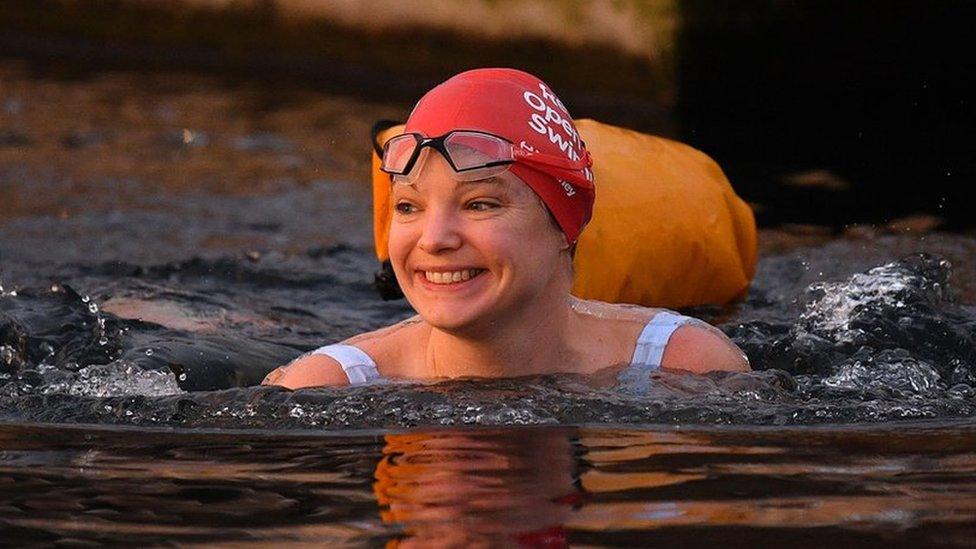Cumbria: Otters not yet out of murky waters, experts warn
- Published
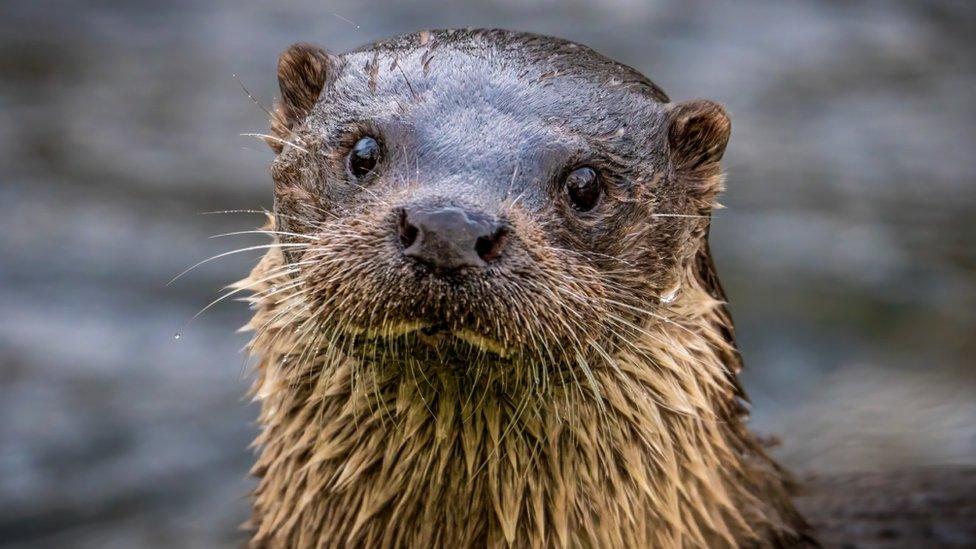
Otter numbers have steadily grown, but conservationists have warned it is not cause for celebration just yet
Otters were almost extinct 50 years ago due to polluted waterways and persecution in England. The unwavering work of conservationists has meant populations have steadily grown in recent years. But with the issue of pollution now forefront in people's minds, how does it muddy the waters when gauging the future for otters?
Otters have not had it easy. Chemical waste in British waterways in the 1960s, 70s and 80s led to them almost disappearing completely.
Even otter hunting with specially-bred hounds wasn't banned until 1981.
Loss of habitat, getting hit by cars and entanglement in items such as fishing nets continues to plague them.
Years of conservation work has helped protect the creatures but even now, otters are rare and sightings are notoriously elusive.
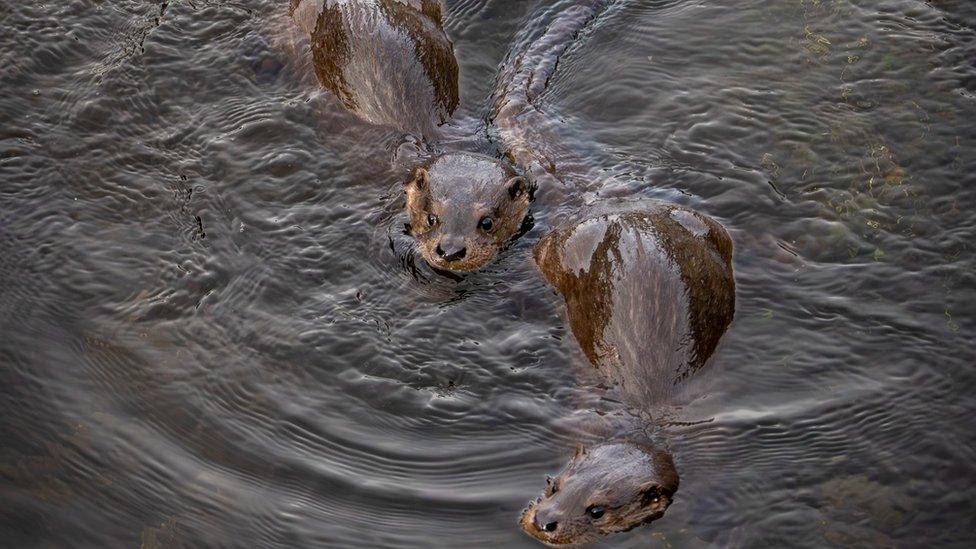
Experts say otters are "ambassadors to healthy environments"
Their playful and mischievous spirit has captured the love of many people in Cumbria, including aspiring wildlife photographer Robert Wight.
"They are one of my favourite animals... so seeing them and photographing them is a treat," the 18-year-old said.
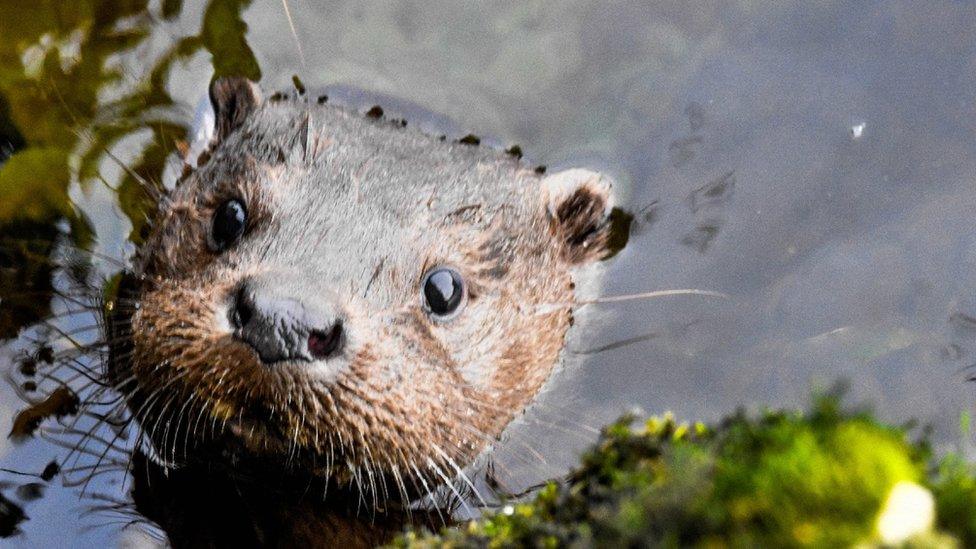
Years of dedicated conservation work has helped protect otters
"I've seen more otters here in Kendal over the past year than ever before," Mr Wight said.
Part-time photographer Jonny Gios has also spent time by Cumbria's riverbanks spotting them in the water.
"It's great to have so much wildlife here and we must not take this for granted," he said.
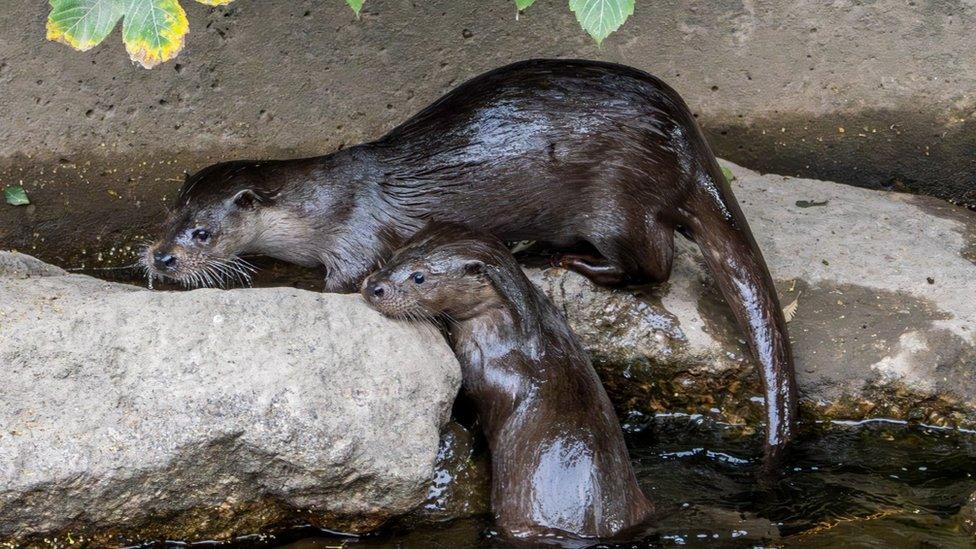
Photographer Jonny Gios said it was "lovely to see life" on riverbanks in Kendal
"It's gone from having otters in one or two locations in Cumbria in the 1990s, to otters occupying all suitable habitat," Cumbria Wildlife Trust's David Harpley explained.
"Otters arrived back in numbers in Cumbria in the 1990s after swimming through water systems from Scotland," he said.
"What we thought was going to happen was the otters would occupy remote places away from human contact, but among the first places they have gone to are lowland urban places where there is fish."
Otters have been seen in other populated places this year, including Exeter city centre and East Nottingham.
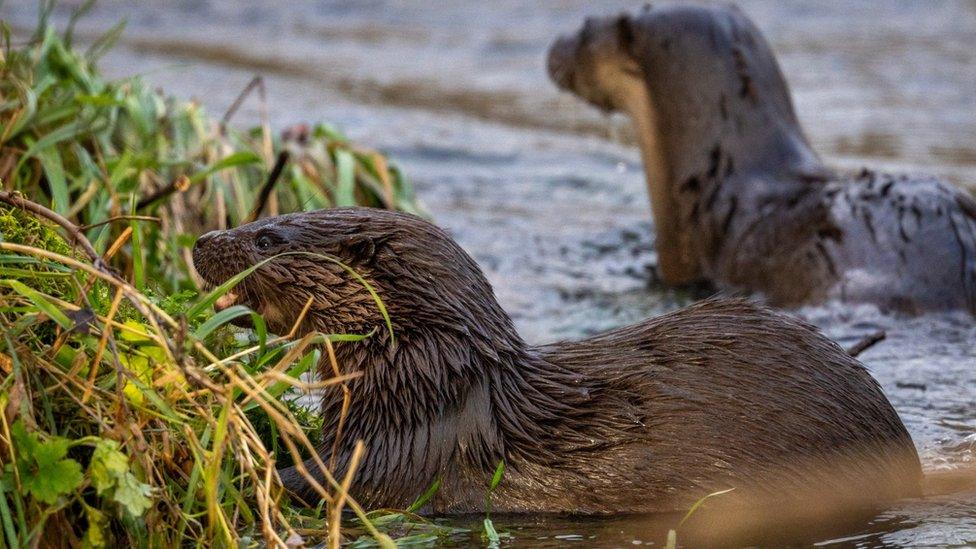
Dr Yoxon said that otters may have to swim further inland to find food
However the recent sightings in lowland places could be an indicator of loss of food sources, Dr Paul Yoxon, from the International Otter Survival Fund (IOSF), said.
"Eel numbers have greatly declined, in some places by about 90%, which is a favourite prey of the otter.
"It could be that because of loss of prey availability they are having to travel further and so home ranges have increased," he said.
He said this could also explain why there have been more reports of otters scavenging on fish in people's garden ponds.
The otter was filmed through a window by a surprised neighbour
"Otters do not kill for fun and will only take to eat," Dr Yoxon added.
"The otter is an ambassador to a healthy environment - as they are at the top of the food chain and use both the land and water environments, both habitats have to be in excellent condition."
While water quality may have improved in some places, it has deteriorated in others.
Earlier in the month, leaked records suggested water companies wrongly downgraded dozens of pollution events, including sewage being released into areas in the Lake District.

Dr Yoxon said water quality in English rivers was "still very poor"
Dr Yoxon said water quality in English rivers was "still very poor".
"If it is so dangerous that people cannot take the occasional swim then they can hardly be healthy for the fish and otters either," he added.
Sarah Neill rescues otters and other animals at Kendal College's wildlife rehabilitation centre.
She explained pollution also includes "microplastics and chemicals bioaccumulate up the food chain and end up at the highest concentrations in the bodies of top predators such as the otter".

The Eurasian otter, also known as the Lutra Lutra, frequents rivers, coasts and waterways across the UK
As one of Britain's top predators, they feed on fish, crabs, octopus, amphibians, small mammals and birds
The otter is protected in the UK under the Wildlife and Countryside Act 1981
Otters communicate using vocal expression such as whistles, birdlike twittering and spitting and also in their spraint (droppings)
Otters have their cubs in underground burrows, known as holts
It has two layers of fur, a thick waterproof outer one and a warm inner one with 50,000 hairs/cm2
Source: IOSF and Wildlife Trusts

Another factor that makes the health of otter populations unclear is the limitations of monitoring them.
There are no figures of otter populations available because surveys only look for secondary signs in the form of their droppings, known as spraint.
"Selected sites are visited and checked for a distance of up to 1,800ft (600m) and if spraint is found then that 10km grid square is marked as positive," Dr Yoxon said.
"Obviously this means that an otter has actually been there but it does not give any idea of otter numbers, or even if the animal is resident," he continued.
Dr Yoxon said that spraint could suggest an otter was "merely passing through" and not living there.
Amid the uncertainty, there is dedicated conservation work being done.
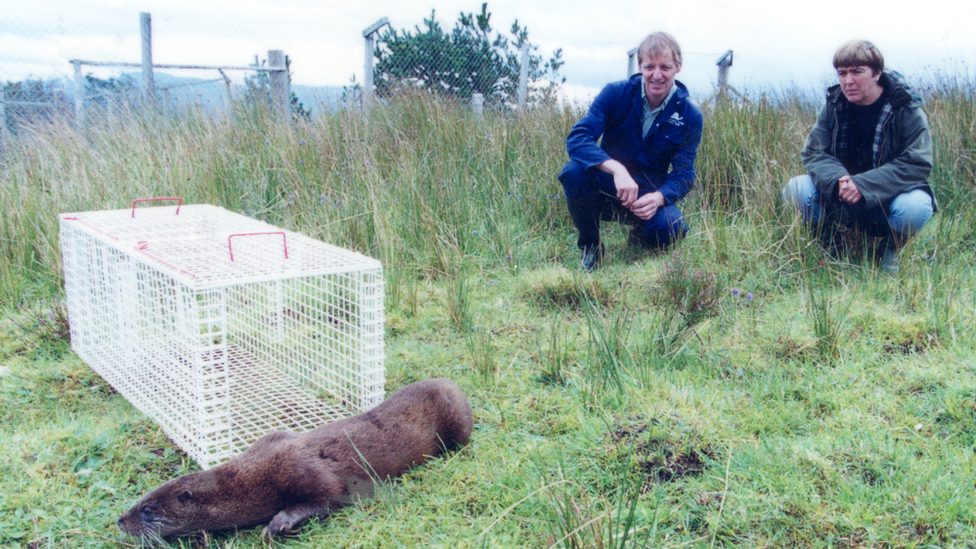
Dr Paul Yoxon and his wife, Grace, rehabilitate and rear otter cubs as part of their work with IOSF
Ms Neill works together with IOSF, a charity based on the Isle of Skye which has provided global education, research and a rehabilitation centre for 30 years.
Cubs can often be separated from their mothers due to storms causing rising water levels.
A recent rescue involved a cub called Eden, who was found alone on top of a fell in the Lake District earlier this year.
"Eden was sent to us for initial assessment, first aid and short-term care, which is what we specialise in," Ms Neill said.
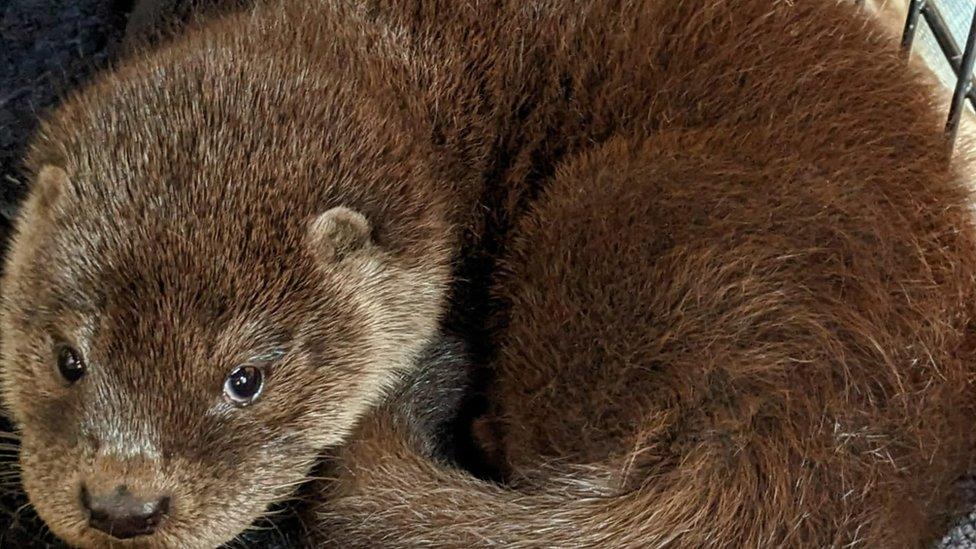
Eden was rescued after being found alone on top of a fell in the Lake District earlier this year
Eden was then transferred to the IOSF sanctuary and it is hoped he will be released back into the wild in 2024.
Rehabilitation of otter cubs can take up to 15 months to match what cubs in the wild would spend with their mothers.
The work being done by IOSF and Kendal College helps otter numbers improve, but Dr Yoxon said commenting about populations "needed to be treated with caution".
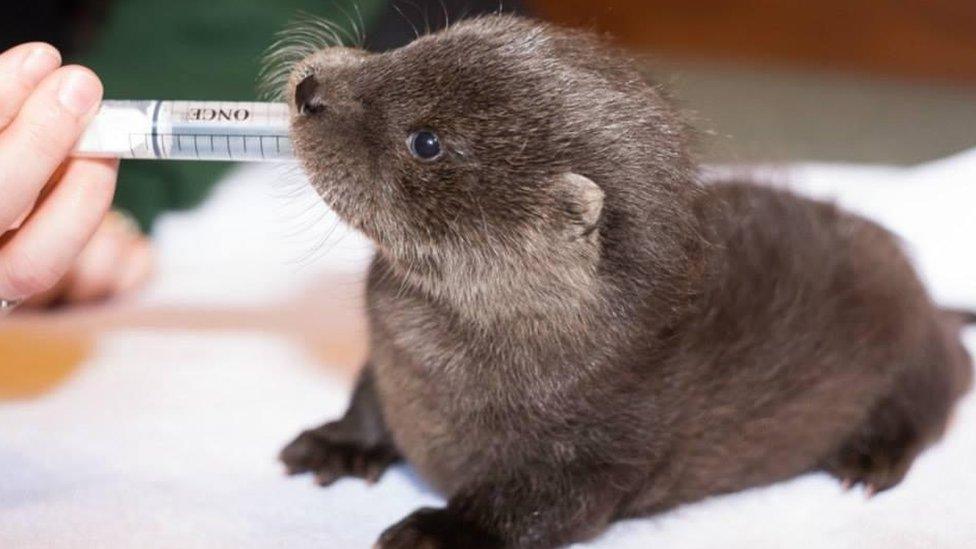
Rehabilitation of otter cubs can take up to 15 months and they need "minimal human contact"
"It can lead to complacency so that people no longer consider it important to conserve them," he said.
Ms Neill agreed, saying there was "a lack of public awareness of the threats our otters face, as well as their ecological importance".
The future for otters and their habitat remains unclear. But experts hope that recent sightings will pique people's interest into protecting not just the species, but also the UK's waterways they call their home.

Follow BBC Cumbria on Facebook, external, X (formerly Twitter), , externaland Instagram, external. Send your story ideas to northeastandcumbria@bbc.co.uk, external.
Related topics
- Published4 December 2023

- Published25 August 2023
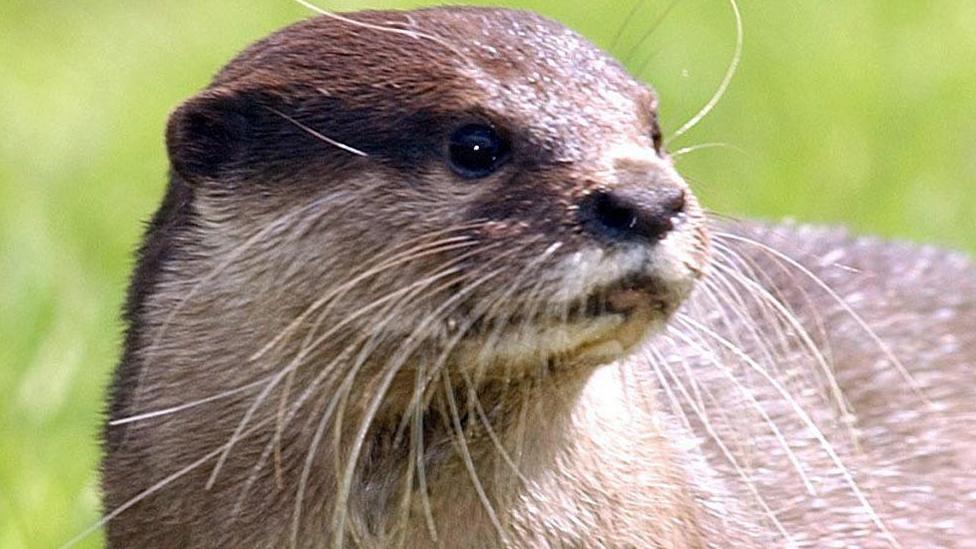
- Published19 July 2023
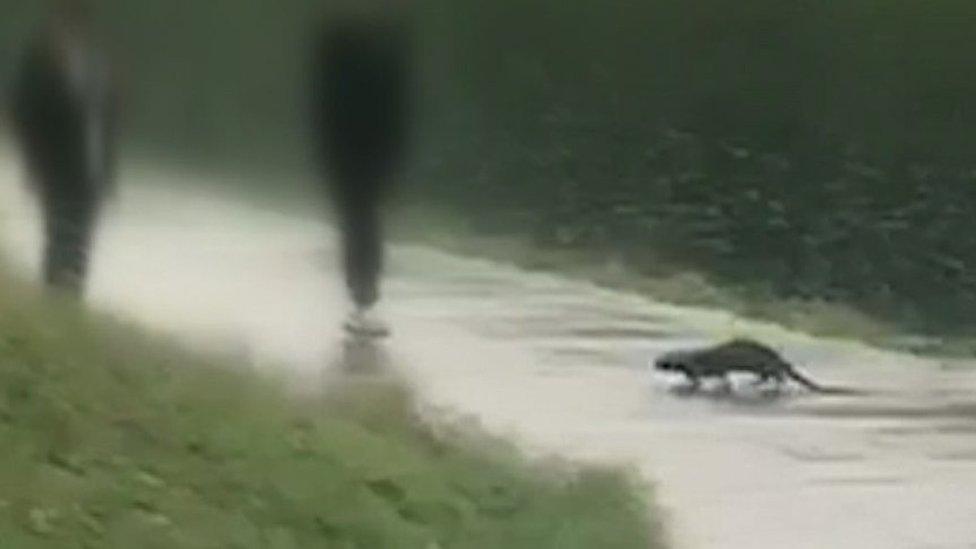
- Published10 October 2022

- Published31 January 2022
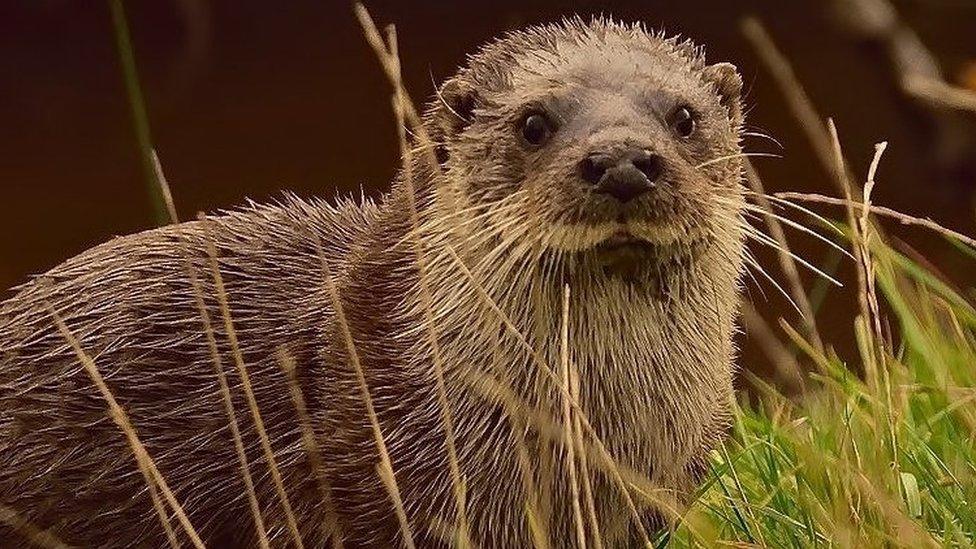
- Published13 January 2022
